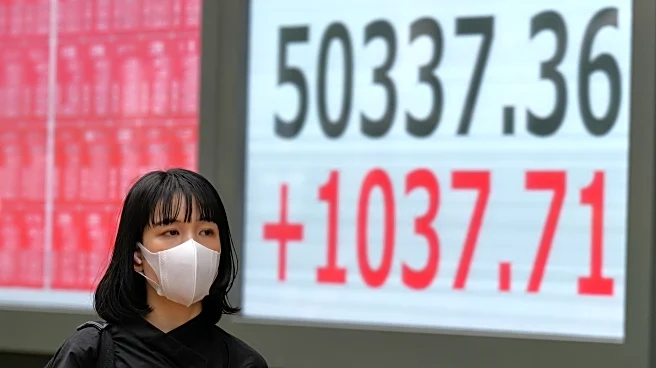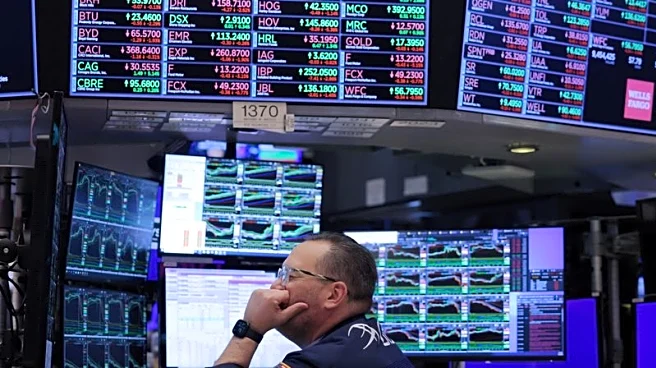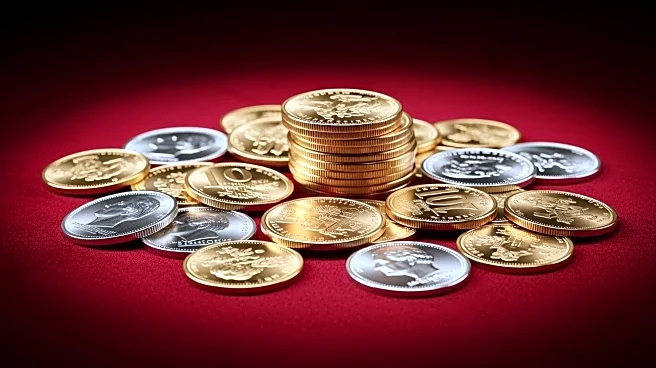What's Happening?
Gold prices have reached record highs in 2025, driven by economic uncertainties and increased demand from central banks. The precious metal has surged over 50% year-to-date, surpassing $4,000 an ounce.
Despite a recent pullback, gold remains a favored safe-haven asset amid geopolitical tensions, inflation concerns, and Federal Reserve rate cuts. Central banks, particularly in China, India, and Russia, have been stockpiling gold to diversify away from the U.S. dollar. This trend, coupled with investor inflows into gold-backed ETFs, has provided strong support for gold prices.
Why It's Important?
Gold's rally highlights its role as a hedge against economic and geopolitical risks. The metal's appeal is bolstered by lower interest rates, which reduce the opportunity cost of holding non-yielding assets like gold. Central bank purchases and ETF inflows reflect a broader shift towards gold as a core portfolio holding. This trend underscores concerns about currency stability and financial security, particularly amid global tensions and monetary policy shifts. The sustained demand for gold could influence market dynamics and investment strategies, impacting asset allocation decisions across financial markets.
What's Next?
Analysts are divided on gold's future trajectory, with some predicting further gains and others cautioning about potential pullbacks. The Federal Reserve's upcoming rate decision and geopolitical developments will be key factors influencing gold prices. Central bank policies and investor sentiment will continue to shape the market, with potential implications for inflation and currency stability. As gold remains a focal point for investors seeking safety, its performance will be closely watched for signals of broader economic trends.













